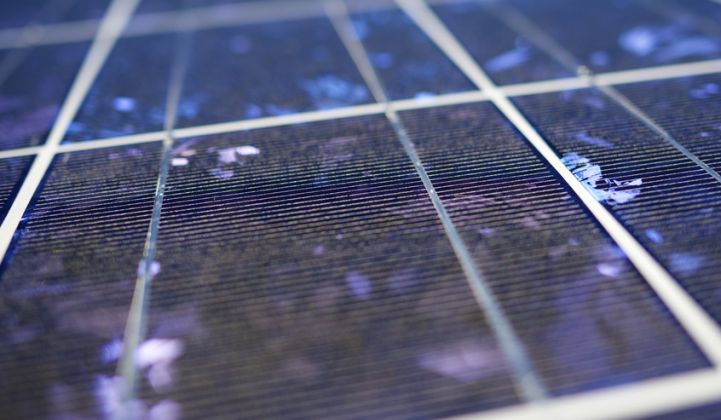Skittish investors who have difficulty discerning the differences between oil markets and electricity markets may be dumping solar stocks. But those looking for stable returns through project-level investments certainly haven't backed away from the sector.
That was evident in new numbers from Bloomberg New Energy Finance (BNEF) showing that solar accounted for nearly half of all global clean energy investments in 2014.
According to BNEF's latest tally, solar brought in $149.6 billion last year, up from $114.7 billion in 2013. The rise of solar, mostly photovoltaics, helped boost global investment numbers by 16 percent, bringing the total to $310 billion.
The International Energy Agency (IEA) estimates that $1 trillion a year will need to pour into non-fossil energy in order to stabilize global temperatures. However, in 2012 and 2013, investments in renewables through projects, venture capital and public equity dipped, seemingly reversing years of positive momentum toward that goal.
The drop was actually rooted in a positive trend. It was mostly influenced by the declining cost of photovoltaics and wind equipment, not investor flight. It is now 40 percent less costly to install solar globally compared with 2012, according to IEA.
"The overall decrease is mainly due to the falling cost of some renewable energy technologies, particularly solar PV. These cost savings mean that in some cases, more renewable energy is actually being deployed for less investment. In 2013, it cost USD $40 billion less to achieve the same level of solar deployment as in the previous year," wrote the authors of climate finance report issued last November by the Climate Policy Initiative.
Given the strong drop in deployment costs, the 2014 investment increase was significant.
Investments in storage, energy efficiency and electric cars grew by 10 percent, reaching $37 billion. Wind also saw an 11 percent increase to $99.5 billion. Nearly one-third of all activity occurred in China, now one of the top clean-energy consumers in the world.
Distributed solar also influenced renewable energy investment flows. Distributed projects grew by 34 percent to $73.5 billion, according to BNEF.
As expected, biofuels were most directly impacted by oil's price slide since June. Investments in non-fossil liquid fuels fell by $5.1 billion in 2014.
"Healthy investment in clean energy may surprise some commentators, who have been predicting trouble for renewables as a result of the oil price collapse. Our answer is that 2014 was too early to see any noticeable effect on investment. The impact of cheaper crude will be felt much more in road transport than in electricity generation," said BNEF Chairman Michael Liebreich in a statement.
For more on the lasting impact of oil prices, listen to this week's Energy Gang episode, featuring energy expert Michael Levi:



